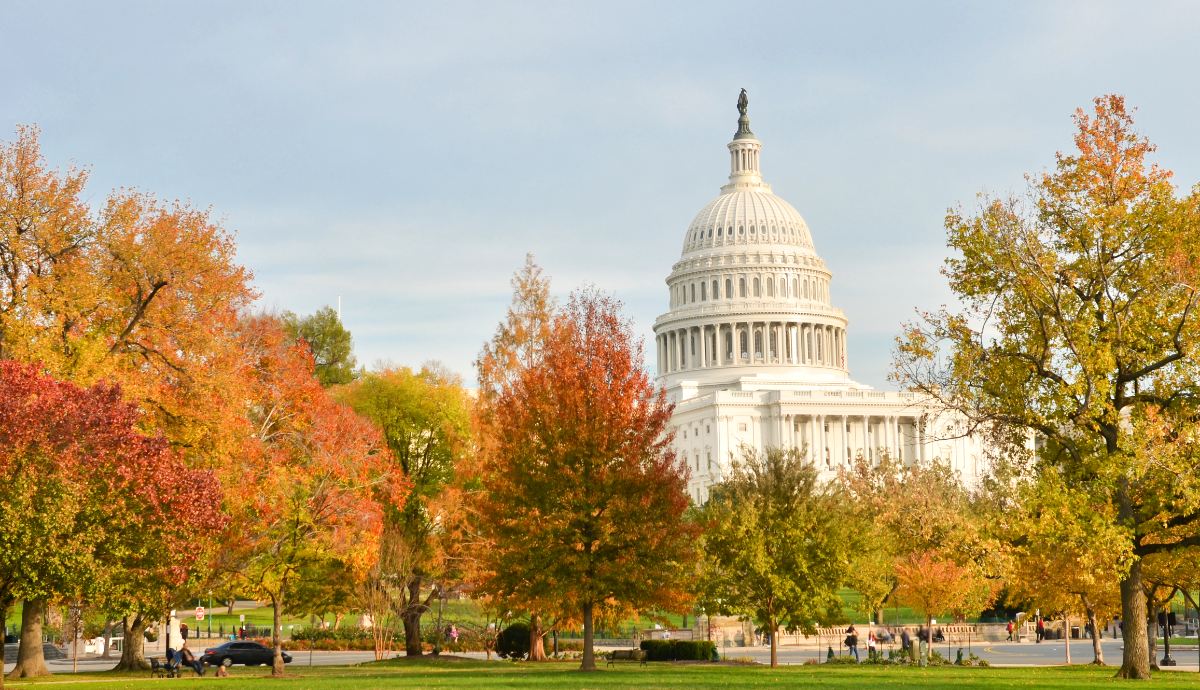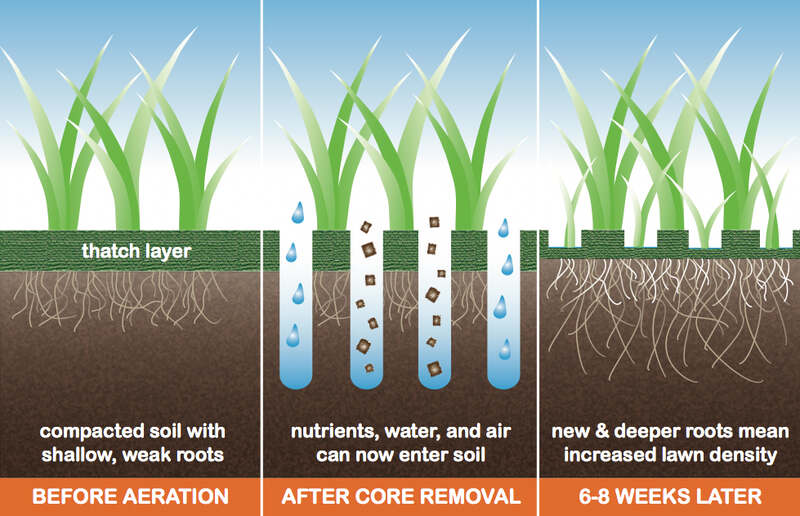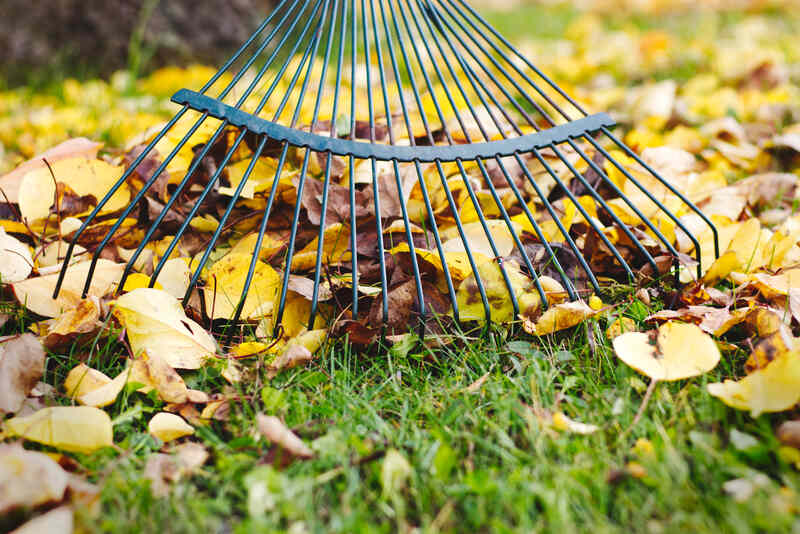
Between holiday travel, weather changes, and the start of the school year, fall can get pretty hectic. If you’re in the DC area, autumn is also a busy season for your lawn, as common cool-season turf like tall fescue and Kentucky bluegrass wakes up from summer dormancy and starts an active growing season.
This lawn care checklist for Washington, DC, and its surrounding communities will help you weather the fall with ease.
Mow
Keep mowing your lawn in the fall until the grass stops growing, and stick to the ⅓ rule: don’t remove more than ⅓ of the grass blade height at a time. As the University of Maryland points out, fall is an active growing season for DMV grasses, so you may need to mow more frequently.
Fairfax County’s Northern Virginia Soil and Water Conservation District suggests keeping your mowing height high, but for tall fescue lawns, UMD advises mowing your lawn ½ to 1 inch shorter to prevent snow mold and matted grass. Some also advise setting your last mow of the season shorter for the same reasons.
To help you make the right decision for your lawn, check out our article about the mowing height debate below.
Read More: Mowing Height Debate: Last Mow of the Season Low?
Test Your Soil
A soil test is the key to knowing what your lawn needs, painting a picture of the nutrient levels in the soil. UMD suggests testing your soil every three years and before a renovation project, like aerating. Because of the growing season, fall is a great time to do a soil test and give your lawn a checkup.
The results of your soil will inform your fall fertilizing needs, preventing over-fertilization that can hurt the ecosystem and your wallet. They also give you a baseline for monitoring your soil’s health over time. Testing kits are available at most local libraries or cooperative extension offices.
Read More: How to Use a Soil Test Kit
Fertilize

Once you’ve got those soil test results, it’s time to plan out your fall fertilizing. This will introduce more nutrients to your soil to amend any deficiencies it may have and keep your grass growing strong. NVSWCD advises fertilizing either in the first two weeks of September or between your last mow and Thanksgiving, but if you’re in Maryland, fertilize by October 15.
Keep in mind that older, more established lawns typically require less nitrogen. Follow the Maryland Lawn Fertilizer law if it applies to your yard. Make sure to sweep fertilizer off of paved areas and back onto your grass, and choose the right fertilizer for your lawn.
Read More: How to Choose the Right Lawn Fertilizer
Aerate

The growing season is the best time for lawn renovation projects like aerating, so for cool-season grasses, UMD experts say to aim for late summer or early fall. This will reduce soil compaction and help your lawn breathe easier. If you’re a gardener, fall is also a good time to till the soil in your garden plot for the same reasons.
Your aerating method will depend on the type of soil you have and the size of the area you’re eyeing for the project. A few options include core aerators, manual aerators, and even aerator shoes.
Pro Tip: Manassas, VA pro Mark Burke says, “aeration breaks up soil compaction and allows water and nutrients to get to the existing grass.” It also “helps new seed to grow.”
Read More: How to Aerate Your Lawn
Overseed
Overseeding and aerating go hand in hand: spreading new grass is an important part of helping your lawn recover from the stress of aerating, and aerating will also allow grass seed to reach the soil more easily if you’re planning to overseed. Overseeding also gives your lawn a boost to thicken up the grass and fill in any bare patches that may have appeared after a hot summer.
Just like aerating, aim for early fall for an overseeding project in Washington, DC. You’ll need to mow your lawn shorter, rake and remove any debris, and spread a layer of enriched topsoil before you start. Plan to give your lawn a deep watering just after overseeding, as well as a light watering daily until the new grass is as tall as the rest of your grass.
Read More: How to Overseed a Lawn in 8 Easy Steps
Take Care of Leaves and Debris

If there’s one thing most people associate with the fall, it’s leaves! The reds, yellows, and oranges of autumn are a beautiful sight, but if they’re left to pile up, it can start to look unsightly – and the accumulated debris will make it harder to care for your lawn. Budget time for clearing out fallen leaves, twigs, and other debris from your lawn this season.
You can opt to rake your leaves, go at them with a leaf blower, or use your lawn mower to break them up and turn them into a natural mulch. This low-maintenance solution introduces nutrients to the soil and preserves moisture. If you do decide to rake, just don’t rake in the rain or just after rainy weather, or you’ll run the risk of pulling up healthy grass!
Pro Tip (from CC Boone of Nxtlvl Scapes): Schedule leaf removal at least twice over the course of the fall season so your grass won’t get patchy.
Get It Done the Right Way
If you’re looking for answers for your DC lawn, you can thankfully take yard work off your to-do list this season and call a local LawnStarter pro today. Whether you’re in Arlington, Rockville, Reston, Chevy Chase, or the District itself, we’re here to offer hands-on expertise and take out the guesswork.
Read next:
Main Image: U.S. Capitol during autumn in Washington, D.C. Photo Credit: Orhan Çam / Adobe Stock